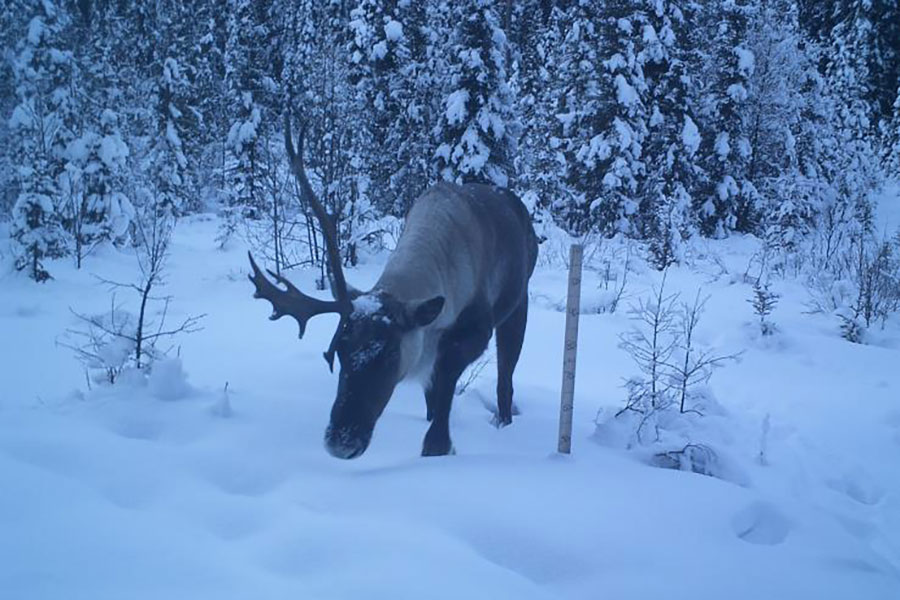
Abstract
Anthropogenic disturbance alters animal movements. Large mammals require vast areas to meet their needs, and they encounter anthropogenic disturbances frequently during daily movements.
We assessed the impact of disturbance on the daily movement of two large threatened mammals, and examined the nuances of movement response to type and regeneration of disturbance across seasons.
We calculated daily net displacement (Euclidian distance between first and last GPS location) and sinuosity (total path length divided by displacement) of grizzly bears and caribou in west-central Alberta, Canada using GPS locations. We assessed links between daily movement and densities of roads, pipelines, seismic lines, harvest blocks, and wellsites. We also considered the effect of harvest block and seismic line regeneration based on LiDAR-derived vegetation height.
During early winter, net displacement of caribou increased in relation to the density of wellsites and harvest blocks. Grizzly bear net displacement increased and sinuosity decreased in relation to the density of non-linear disturbances (harvest blocks, wellsites) during spring. During summer, grizzly bear net displacement increased in relation to secondary road density and decreased in relation to wellsite density. During fall, grizzly bear net displacement decreased in relation to secondary road density and increased in relation to harvest block and pipeline density.
Caribou and grizzly bears adjusted their movement in response to disturbances, but each species responded differently and in accordance with its seasonal ecology. Assessing the impacts of disturbance on threatened species across spatiotemporal scales and seasons provides useful insights for multi-species conservation strategies.
Read the full paper here.
Citation
Finnegan, L., Viejou, R., MacNearney, D., Pigeon, K. E., & Stenhouse, G. B. 2021. Unravelling the impacts of disturbance type and regeneration on movement of threatened species. Landscape Ecology. doi:10.1007/s10980-021-01259-x







